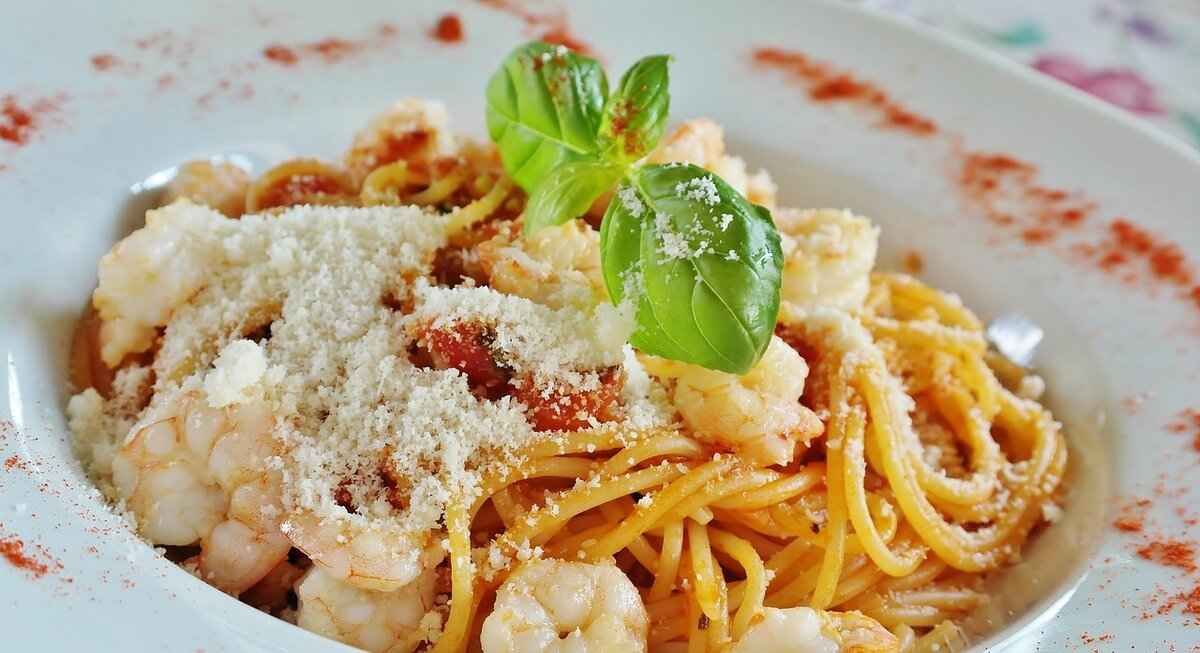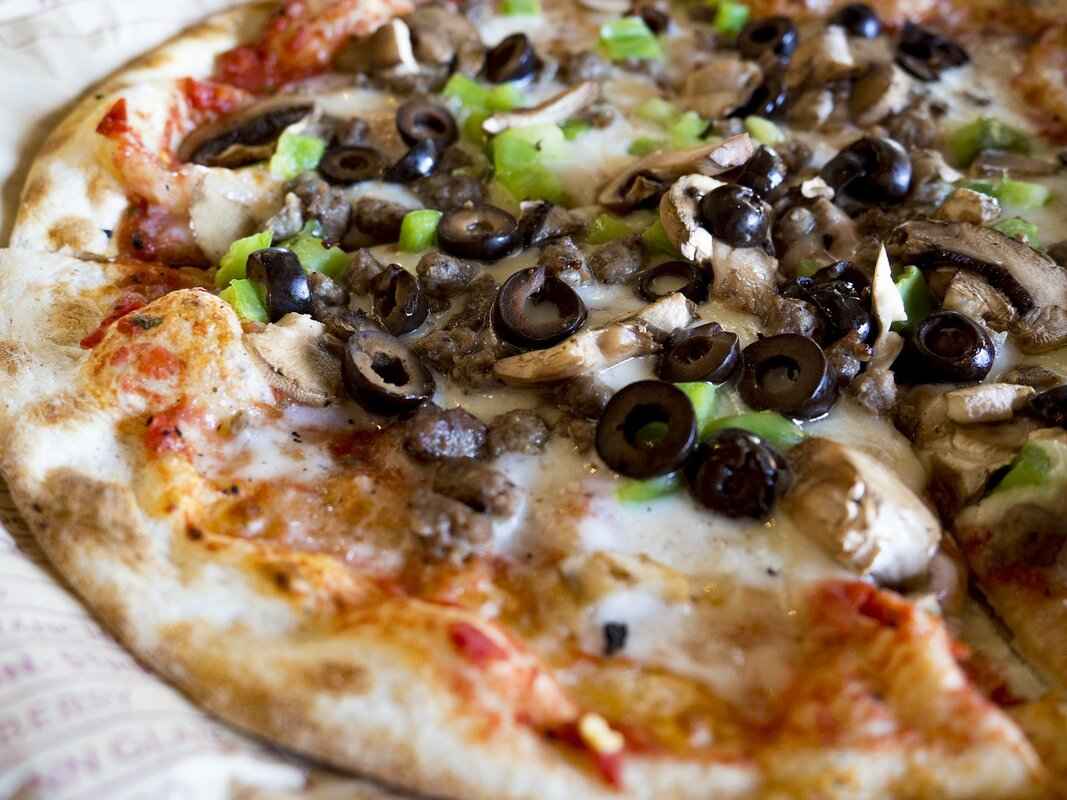This article delves into the rich culinary diversity of India, focusing on the distinctive characteristics that separate North Indian and South Indian cuisines. Each region boasts its own unique flavors, cooking techniques, and signature dishes that reflect its cultural heritage.
The ingredients used in North and South Indian cuisines differ significantly, shaping their respective flavor profiles. In North India, wheat is a staple, often found in the form of naan and roti. Conversely, South India heavily relies on rice, which forms the base of many meals. Additionally, North Indian cuisine frequently incorporates dairy products like paneer and yogurt, while South Indian dishes often feature coconut and tamarind as essential components.
Cooking styles in these regions reflect their cultural traditions and local resources. North Indian cooking typically involves grilling and tandoori techniques, while South Indian cuisine often employs methods like steaming and frying. These techniques not only affect the texture of the food but also enhance the flavors, resulting in vastly different culinary experiences.
Spices are fundamental to Indian cuisine, but their application varies between North and South India. For instance, North Indian dishes often feature spices like cumin, coriander, and garam masala, creating a rich and aromatic flavor. In contrast, South Indian cuisine utilizes a unique blend of spices such as mustard seeds, fenugreek, and curry leaves, which lend a distinct zest to their dishes.
Staple foods serve as the foundation of diets in both regions. In North India, wheat is predominant, while in South India, rice takes center stage. Additionally, lentils play a crucial role in both cuisines, providing essential protein. These staples shape the daily meals and are often accompanied by a variety of curries and side dishes.
Signature dishes are emblematic of both North and South Indian cuisines. In North India, iconic dishes include butter chicken, paneer tikka, and biryani. These dishes are known for their rich gravies and aromatic spices. On the other hand, South Indian cuisine is celebrated for its dosa, idli, and sambar, which showcase the use of rice and lentils, often accompanied by a variety of chutneys.
Regional influences significantly shape the culinary landscape of India. The geography, climate, and cultural practices of each area contribute to the availability of ingredients and the evolution of cooking techniques. For instance, coastal regions in South India utilize an abundance of seafood, while the arid climate of North India favors grain-based dishes.
Beverages are an integral part of Indian cuisine. In North India, lassi (a yogurt-based drink) and chai (tea) are popular, while South India is known for its filter coffee and buttermilk. These drinks not only complement meals but also reflect the cultural preferences of each region.
Sweets hold a special place in Indian culinary traditions. North Indian sweets like gulab jamun and jalebi are often rich and syrupy, while South Indian desserts such as payasam and mysore pak are known for their unique flavors and textures, commonly incorporating ingredients like coconut and jaggery.
Culinary practices in both regions are often influenced by festivals. Special dishes are prepared during celebrations, showcasing the cultural significance of food. For example, North Indians may prepare puri and halwa during Diwali, while South Indians celebrate Pongal with traditional rice dishes and sweets.

What Are the Key Differences in Ingredients?
Indian cuisine is a vibrant tapestry of flavors, aromas, and textures, shaped by the diverse regions of the country. Among the most notable distinctions are the ingredients that define North and South Indian cuisines. This section explores the key differences in ingredients, shedding light on how they influence cooking styles and flavor profiles.
The culinary landscape of India is profoundly influenced by geography, climate, and cultural traditions. In North India, the cuisine is characterized by the use of wheat as a staple grain, with dishes such as roti and naan being central to meals. The region also favors dairy products, including paneer and ghee, which add richness to many dishes. Moreover, North Indian cuisine often incorporates a variety of legumes and vegetables, with a focus on rich gravies and spices like cumin, coriander, and garam masala.
In stark contrast, South Indian cuisine relies heavily on rice as its primary staple. Rice is consumed in various forms, including idli, dosa, and upma. Additionally, South Indian meals often feature a variety of lentils, such as toor dal and moong dal, which are essential for protein. The use of coconut, whether grated, milk, or oil, is prevalent, adding a unique flavor and texture to dishes. Furthermore, South Indian cuisine is known for its use of mustard seeds, curry leaves, and tamarind, which contribute to its distinctive taste.
- North Indian Ingredients:
- Wheat – Roti, Naan
- Dairy Products – Paneer, Ghee
- Legumes – Chana, Rajma
- Spices – Garam Masala, Cumin, Coriander
- South Indian Ingredients:
- Rice – Idli, Dosa, Upma
- Lentils – Toor Dal, Moong Dal
- Coconut – Grated, Milk, Oil
- Spices – Mustard Seeds, Curry Leaves, Tamarind
Moreover, the spice blends used in each region also reflect these ingredient preferences. In North India, spices are often used in elaborate mixtures to create rich, complex flavors. Dishes like butter chicken and paneer tikka masala showcase this culinary richness. In contrast, South Indian dishes are known for their lighter, yet equally flavorful, spice combinations, as seen in sambar and rasam.
Furthermore, the cooking methods employed in each region also stem from the ingredients used. North Indian cuisine often involves slow cooking and grilling, allowing flavors to meld and develop. On the other hand, South Indian cuisine frequently utilizes steaming and stir-frying, which preserves the freshness of ingredients and their natural flavors.
In summary, the stark differences in ingredients between North and South Indian cuisines not only define their unique flavors but also shape their cooking methods. Understanding these variations provides a deeper appreciation for the rich culinary heritage of India.

How Does the Cooking Style Differ?
Indian cuisine is a vibrant tapestry of flavors, colors, and aromas, with each region showcasing its unique culinary identity. One of the most fascinating aspects of this diversity lies in the cooking styles that differ significantly between North and South India. This section delves into the various techniques and traditions that define the culinary practices of these two regions, highlighting their distinctive preparations.
North Indian cooking is characterized by a variety of techniques that emphasize rich, hearty flavors. The most common methods include:
- Slow Cooking: Dishes like dal makhani and butter chicken benefit from slow cooking, allowing spices to meld and develop deep flavors.
- Grilling and Tandoori: The use of the traditional tandoor oven is prevalent, where meats and breads are grilled to perfection, imparting a smoky flavor.
- Frying: North Indian snacks often involve frying, such as samosas and pakoras, which are crispy and flavorful.
In contrast, South Indian cuisine is known for its lighter, more subtle flavors. Key cooking techniques include:
- Steaming: Many South Indian dishes, like idli and puttu, are steamed, preserving nutrients and offering a light texture.
- Fermentation: The preparation of dosa and appam involves fermentation, which not only enhances flavor but also improves digestibility.
- Tempering: The technique of tempering spices in oil, known as tadka, is crucial in South Indian cooking, adding layers of flavor to dishes like sambar.
The geographical landscape of North and South India significantly influences their cooking styles. North India, with its fertile plains, is abundant in wheat and dairy products, leading to a focus on breads like naan and paratha. Conversely, the coastal regions of South India thrive on rice and seafood, resulting in a cuisine rich in rice-based dishes and coconut.
Cooking styles in both regions are deeply intertwined with cultural traditions. In North India, celebrations often feature elaborate meals that showcase the richness of Mughlai influences, while South Indian festivals highlight the use of local ingredients and traditional methods. For instance, during festivals, North Indians might prepare biryani, while South Indians may serve a traditional feast of banana leaves with various curries and rice dishes.
The differences in cooking styles not only affect the preparation but also the overall flavor profiles of the dishes. North Indian cuisine tends to be richer and spicier, with a heavy reliance on cream and butter, creating a luxurious mouthfeel. In contrast, South Indian dishes are often lighter, focusing on fresh ingredients and a balance of spices that create a harmonious flavor without overwhelming the palate.
In summary, the cooking styles of North and South India are a reflection of their unique cultural traditions and regional resources. Understanding these differences not only enhances our appreciation of Indian cuisine but also invites us to explore the rich tapestry of flavors that each region has to offer.
What Role Does Spicing Play?
Spices are the heart and soul of Indian cuisine, infusing dishes with vibrant flavors and aromas. The way spices are utilized varies significantly between North and South India, leading to distinct culinary identities that reflect regional traditions and preferences. In this section, we delve into the essential role of spices in both regions, highlighting their unique applications and the flavors they create.
In North India, spices are often used in rich, creamy gravies and hearty dishes. Common spices include:
- Cumin – Adds a warm, earthy flavor.
- Coriander – Offers a citrusy note that brightens dishes.
- Garam Masala – A blend of spices that provides depth and warmth.
- Cardamom – Imparts a sweet, aromatic flavor.
These spices are typically combined with ingredients like paneer, meats, and rich sauces, creating dishes such as Butter Chicken and Rogan Josh. The use of cream and yogurt further enhances the flavor profiles, making North Indian cuisine rich and indulgent.
Conversely, South Indian cuisine employs spices in a different manner, focusing on lighter, more refreshing flavors. Key spices include:
- Mustard Seeds – Often used for tempering, providing a nutty flavor.
- Turmeric – Known for its vibrant color and health benefits.
- Curry Leaves – Adds a unique aroma and flavor.
- Red Chili – Provides heat and depth.
In South India, spices are frequently combined with coconut, rice, and lentils, resulting in dishes like Sambar and Rasam. The use of fermentation in items like dosa and idli also highlights the innovative use of spices in creating complex flavors.
While some spices are common across both regions, their usage can differ greatly. For instance, coriander is used extensively in North Indian curries, while in the South, it is often found in chutneys and spice blends. Similarly, coconut is a staple in South Indian cooking, enhancing the flavor of many dishes, whereas it is rarely used in the North. This regional variation contributes to the unique taste profiles that define each cuisine.
The techniques employed in cooking also play a vital role in flavor development. In North India, methods like slow-cooking and braising allow spices to meld and develop deeper flavors. On the other hand, South Indian cuisine often utilizes tempering, where spices are fried in oil to release their essential oils, creating a burst of flavor that is integral to dishes like dal and vegetable curries.
In conclusion, the role of spices in Indian cuisine cannot be overstated. The distinct applications and blends of spices in North and South India not only define the flavors of each region but also reflect the rich cultural heritage and culinary traditions that make Indian cuisine a global favorite. By understanding these differences, one can truly appreciate the complexity and diversity that spices bring to Indian cooking.
Are There Regional Variations of Common Spices?
India’s culinary landscape is a vibrant tapestry woven from diverse regional influences, and spices play a pivotal role in this gastronomic journey. The question of regional variations of common spices unveils a fascinating aspect of Indian cuisine, showcasing how geography and culture shape the flavors that define each region.
In North India, spices such as cumin, coriander, and garam masala are frequently utilized, contributing to the rich and robust flavors characteristic of this region. Cumin, known for its earthy aroma, is often used in tadka (tempering) and enhances dishes like dal and curries. Coriander, with its fresh and citrusy notes, complements the heat of chili and is a staple in various marinades and chutneys.
Conversely, South Indian cuisine is renowned for its use of spices like mustard seeds, fenugreek, and curry leaves. Mustard seeds are often tempered in hot oil, releasing their pungent flavor, which is essential in dishes like sambar and rasam. Fenugreek adds a slightly bitter undertone that balances the sweetness of coconut-based dishes, while curry leaves impart a distinctive aroma, elevating the overall flavor profile.
The availability of local ingredients significantly impacts the choice and combination of spices in different regions. For instance, the abundance of coconut in South India leads to the frequent pairing of spices with coconut milk or grated coconut, creating a unique flavor that is less common in the North. In contrast, the use of dairy products such as yogurt in the North often influences the use of spices that complement creamy textures, resulting in dishes like butter chicken and paneer tikka.
Each region boasts its own unique spice blends that reflect local tastes and culinary traditions. For example, panch phoron, a five-spice blend from Bengal, includes mustard, cumin, fennel, fenugreek, and nigella seeds, offering a complex flavor profile that enhances vegetable dishes. In contrast, the North often relies on garam masala, a fragrant blend of spices such as cardamom, cloves, and cinnamon, which is added towards the end of cooking to preserve its aromatic qualities.
The choice of spices also plays a significant role in the health benefits of regional dishes. Many spices used in Indian cooking, such as turmeric and ginger, are known for their anti-inflammatory and antioxidant properties. In South India, the use of black pepper not only adds heat but also aids digestion, making it a common ingredient in many meals. Similarly, the incorporation of cumin in North Indian cuisine is believed to support digestive health and boost immunity.
The impact of spices extends beyond flavor; they also influence cooking techniques. In North India, spices are often roasted before being ground into powders, intensifying their flavors. South Indian cooking, on the other hand, frequently employs the technique of tempering, where spices are fried in oil to release their essential oils and aromas, creating a fragrant base for dishes.
In conclusion, the regional variations of spices in India are not merely about flavor; they reflect the rich cultural heritage and diverse agricultural practices of the country. Understanding these differences enhances our appreciation for Indian cuisine and the culinary artistry that goes into each dish.
How Do Cooking Techniques Affect Flavor?
Cooking techniques are essential in shaping the flavor profiles of dishes, particularly in the rich culinary landscape of India. The methods employed in both North and South Indian cuisines not only enhance the taste but also contribute to the cultural identity of each region. This section explores how various cooking techniques such as roasting, frying, and steaming play a pivotal role in defining flavors and textures in Indian cuisine.
Roasting is a popular technique used extensively in both North and South Indian cooking. This method involves cooking food evenly in an oven or over an open flame, which caramelizes sugars and intensifies flavors. In North India, tandoori cooking is a prime example, where marinated meats and breads are cooked in a clay oven, resulting in a smoky flavor and crispy texture.
- Tandoori Chicken: A classic dish that showcases the benefits of roasting, providing a rich and spicy flavor.
- Naan: This bread, when roasted in a tandoor, develops a distinct char that enhances its taste.
Frying, especially deep frying, is another technique that significantly affects flavor. In South Indian cuisine, dishes like vada and medu vada are deep-fried to achieve a crispy exterior while maintaining a soft interior. The frying process not only adds texture but also infuses the food with rich flavors from the oil and spices used.
- Masala Dosa: A fermented crepe made from rice and lentils, filled with spiced potatoes and fried to perfection.
- Bhaji: Vegetables coated in a spiced chickpea flour batter and deep-fried, offering a crunchy and flavorful snack.
Steaming is a cooking method that retains the natural flavors and nutrients of ingredients, making it a healthier option. In South Indian cuisine, idli and puttu are popular steamed dishes that highlight this technique. Steaming allows the ingredients to cook evenly while maintaining their moisture, resulting in a soft and fluffy texture.
- Idli: These rice cakes are steamed and served with chutney, showcasing the delicate flavors of fermented rice and lentils.
- Puttu: A steamed rice cake layered with coconut, offering a subtly sweet flavor profile.
The choice of cooking techniques is often a reflection of the regional identity and cultural practices. In North India, the emphasis on roasting and grilling aligns with the availability of clay ovens and the influence of Mughlai cuisine. Conversely, South Indian cooking leans towards steaming and frying, influenced by the region’s climate and agricultural practices. These methods not only enhance flavors but also tell a story about the people and their traditions.
In conclusion, the diverse cooking techniques employed in North and South Indian cuisines significantly enhance the flavor profiles of dishes. Whether through the smoky notes of roasting, the crispy textures of frying, or the delicate preservation of steaming, each method contributes to the culinary identity of the respective regions. Understanding these techniques allows for a deeper appreciation of the rich tapestry of Indian cuisine.
What Are the Staple Foods in Each Region?
Staple foods play a crucial role in shaping the culinary landscape of India, particularly in the northern and southern regions. These foundational ingredients not only define daily meals but also reflect the cultural and agricultural diversity of each area. In this section, we will explore the primary staple foods that serve as the backbone of North and South Indian diets, focusing on rice, wheat, and lentils.
In North India, the dominant staple is wheat. This grain is primarily used to make various types of bread, such as roti, paratha, and naan. Wheat-based dishes are often accompanied by rich gravies and curries, highlighting the region’s love for robust flavors. Additionally, rice is also consumed, particularly in states like Punjab and Haryana, where it complements traditional dishes.
- Wheat – The primary staple, used in various forms of bread.
- Rice – Gaining popularity, especially in festive meals.
- Lentils – A significant source of protein, used in dishes like dal.
In contrast, the southern region of India predominantly relies on rice as its staple food. It is the foundation of most meals, served alongside a variety of curries, chutneys, and side dishes. The versatility of rice allows for the creation of iconic dishes such as idli, dosa, and pongal. Furthermore, wheat is also consumed, albeit to a lesser extent, primarily in the form of chapati.
- Rice – The cornerstone of South Indian diets, used in numerous preparations.
- Wheat – Used less frequently, but still present in some households.
- Lentils – Integral to many dishes, providing essential nutrients.
Lentils are a common staple in both North and South Indian cuisines, playing a crucial role in providing protein, especially in vegetarian diets. In North India, varieties such as masoor dal and moong dal are commonly prepared with spices and served with rice or bread. In South India, lentils are essential in dishes like sambar and rasam, which are often paired with rice, enhancing the overall meal experience.
| Region | Staple Foods | Popular Dishes |
|---|---|---|
| North India | Wheat, Rice, Lentils | Roti, Biryani, Dal Makhani |
| South India | Rice, Wheat, Lentils | Dosa, Idli, Sambar |
In summary, the staple foods of North and South India reflect the diverse agricultural practices and culinary traditions of each region. While wheat dominates the northern diet, rice takes precedence in the south. Lentils serve as a common ground, enriching both cuisines with their nutritional value and versatility. Understanding these staples not only highlights the differences in regional diets but also underscores the rich tapestry of Indian culinary heritage.

Which Signature Dishes Define Each Cuisine?
When it comes to Indian cuisine, the diversity is nothing short of astounding. Each region boasts its own distinct flavors, techniques, and signature dishes that reflect its culture and traditions. Among these, North and South Indian cuisines stand out, each with its own iconic offerings that embody their culinary essence.
Signature dishes are not just meals; they are a celebration of the region’s culture, history, and ingredients. In this section, we delve into the hallmark dishes from both North and South India, highlighting their unique characteristics and the stories behind them.
- Butter Chicken: Originating from Delhi, this dish combines marinated chicken cooked in a rich, creamy tomato sauce, often served with naan or rice.
- Biryani: A fragrant rice dish layered with marinated meat, Biryani varies in style across regions but remains a favorite for its complex flavors.
- Rogan Josh: A staple in Kashmiri cuisine, this slow-cooked lamb dish is infused with aromatic spices, offering a warm and hearty meal.
- Palak Paneer: This vegetarian delight features paneer (Indian cheese) cooked in a vibrant spinach gravy, showcasing the region’s love for dairy and greens.
- Dosa: A thin, crispy crepe made from fermented rice and lentil batter, often served with coconut chutney and sambar, it’s a breakfast favorite.
- Idli: These steamed rice cakes are light and fluffy, typically enjoyed with sambar and chutney, making them a staple in South Indian households.
- Sambar: A lentil-based vegetable stew, Sambar is flavored with tamarind and a blend of spices, often accompanying various South Indian dishes.
- Rasam: A tangy soup made with tamarind juice, tomatoes, and spices, Rasam is both a comforting dish and a digestive aid.
The ingredients used in these signature dishes are crucial to their flavor profiles. In North India, wheat is a staple, leading to the creation of breads like naan and paratha. In contrast, South Indian cuisine predominantly features rice as the main carbohydrate, which is evident in dishes like dosa and idli.
Cooking techniques also vary significantly between the two regions. North Indian dishes often involve grilling and slow-cooking, which allows flavors to meld over time. South Indian cuisine, on the other hand, frequently utilizes steaming and fermentation, particularly in the preparation of idli and dosa, enhancing their nutritional value.
Spices are the heart of Indian cooking, and their use varies widely. North Indian cuisine tends to favor warming spices like cumin and coriander, while South Indian dishes often incorporate tangy and aromatic spices such as mustard seeds and curry leaves. This difference not only impacts flavor but also the overall culinary experience.
In summary, the signature dishes of North and South Indian cuisines are a testament to the rich culinary heritage of the country. Each dish tells a story, showcasing the unique ingredients, cooking techniques, and cultural significance that define the regions. Whether you are savoring the creamy richness of butter chicken or the crispy delight of dosa, you are experiencing a piece of India’s diverse culinary landscape.
What Are the Most Popular North Indian Dishes?
North Indian cuisine is a vibrant tapestry of flavors, textures, and aromas, reflecting the rich cultural heritage of the region. This section delves into some of the most popular North Indian dishes, each offering a unique culinary experience that has captivated food lovers around the globe.
- Butter Chicken: Perhaps the most iconic dish from North India, butter chicken, or murgh makhani, features tender chicken marinated in a blend of spices and cooked in a creamy tomato sauce. This dish is often paired with naan or rice, making it a staple in many households and restaurants.
- Biryani: A fragrant rice dish layered with marinated meat, biryani is a celebration of spices and flavors. Each region has its own variation, but North Indian biryani is known for its rich aroma, often enhanced by saffron and cooked with a blend of spices that include cardamom and cloves.
- Naan: This soft, leavened flatbread is a perfect accompaniment to various curries and gravies. Traditionally cooked in a tandoor, naan can be found in various flavors, including garlic, butter, and even stuffed with ingredients like paneer or potatoes.
- Paneer Tikka: A vegetarian delight, paneer tikka consists of marinated cubes of paneer grilled to perfection. The smoky flavor combined with spices makes it a popular appetizer or snack, often served with mint chutney.
- Rogan Josh: Originating from Kashmiri cuisine, this aromatic lamb dish is known for its rich, red color and complex flavor profile. Slow-cooked with a variety of spices, rogan josh is typically served with rice, making it a comforting meal.
- Chole Bhature: This dish is a favorite among locals and visitors alike, featuring spicy chickpeas (chole) served with deep-fried bread (bhature). The combination is often enjoyed as a hearty breakfast or lunch option.
- Aloo Gobi: A simple yet flavorful dish made with potatoes (aloo) and cauliflower (gobi), this vegetarian option is seasoned with turmeric, cumin, and coriander, showcasing the essence of North Indian cooking.
Each of these dishes not only highlights the culinary diversity of North India but also reflects the region’s cultural significance and historical influences. The use of spices, cooking techniques, and local ingredients plays a crucial role in creating the distinct flavors that define North Indian cuisine.
When exploring North Indian dishes, one cannot overlook the importance of accompaniments. From various types of bread to rich gravies, each dish is designed to complement the others, creating a harmonious dining experience. The emphasis on communal eating, where dishes are shared among family and friends, further enriches the cultural experience of North Indian cuisine.
In conclusion, the most popular North Indian dishes offer a glimpse into the region’s rich culinary heritage. Whether it’s the creamy butter chicken or the fragrant biryani, each dish tells a story of tradition, culture, and the love of food that binds people together.
What Are the Most Popular South Indian Dishes?
South Indian cuisine is a vibrant tapestry of flavors, textures, and aromas, deeply rooted in the region’s culture and traditions. It is characterized by its use of rice, lentils, and a variety of spices, making it a favorite among food enthusiasts. This article delves into some of the most popular South Indian dishes, highlighting their cultural significance and unique characteristics.
Dosa, a thin, crispy crepe made from fermented rice and urad dal (black gram), is one of the most iconic dishes in South Indian cuisine. It is often served with a variety of chutneys and sambar, a spicy lentil soup. The fermentation process not only enhances the flavor but also makes it easier to digest. Dosa is not just a meal; it’s a cultural experience, often enjoyed at breakfast or as a snack throughout the day.
Idli, another beloved dish, consists of steamed rice cakes that are soft, fluffy, and nutritious. Made from a batter of fermented rice and lentils, idli is typically served with sambar and coconut chutney. This dish is a symbol of health in South Indian households, as it is low in calories and high in protein, making it a perfect breakfast option.
Sambar is a flavorful lentil-based stew that is an essential component of South Indian meals. Made with toor dal (pigeon peas) and a mix of vegetables, it is seasoned with a unique blend of spices. Sambar not only adds a burst of flavor but also provides a nutritional boost to the meal. It is often paired with rice, dosa, or idli, showcasing its versatility.
Vadas, deep-fried lentil fritters, are another popular snack in South Indian cuisine. These crispy delights are typically served with chutney and sambar. Made from urad dal, vadas are known for their crunchy exterior and soft interior, making them a favorite at tea time and during festive occasions.
Pongal is a traditional rice dish cooked with lentils and flavored with black pepper, cumin, and ghee. It is often garnished with cashews and served during festivals, particularly during the harvest festival of Pongal. This dish symbolizes prosperity and gratitude, reflecting the agricultural roots of South Indian culture.
While dosa, idli, sambar, and vadas are staples, their preparation varies across different states in South India. For instance, in Karnataka, you might find a thicker version of dosa called set dosa, while in Tamil Nadu, the emphasis is on the crispy, thin variety. Similarly, sambar recipes differ, with each region adding its local vegetables and spices, resulting in a unique flavor profile.
Each dish in South Indian cuisine tells a story of its origins and the people who prepare it. The use of rice, lentils, and spices is not merely for flavor but is deeply intertwined with the region’s agricultural practices and traditions. Meals are often communal, reflecting the importance of family and community in South Indian culture.
In conclusion, South Indian cuisine offers a rich array of dishes that are not only delicious but also steeped in cultural significance. From the crispy dosa to the fluffy idli and the hearty sambar, each dish represents a unique facet of the region’s culinary heritage.

How Do Regional Influences Shape the Cuisines?
India’s culinary landscape is a vibrant tapestry woven from the threads of its diverse regions, cultures, and histories. Regional influences significantly shape the cuisines of North and South India, affecting everything from the choice of ingredients to the cooking techniques employed. This article delves into how geography, climate, and cultural practices contribute to the unique characteristics of these two culinary traditions.
The geographical diversity of India is a key factor in its culinary variations. North India, characterized by its fertile plains, is known for its rich agricultural produce. Staple crops such as wheat and barley dominate the diet, leading to the creation of dishes like naan and roti. In contrast, South India, with its coastal regions, benefits from an abundance of seafood and rice. The prevalence of rice as a staple ingredient influences the preparation of dishes like dosa and idli.
The climatic conditions of each region also dictate the types of ingredients available. North India experiences a continental climate, which allows for the cultivation of a variety of grains and legumes, such as lentils and chickpeas. These ingredients are foundational to dishes like dal makhani and chole. Conversely, the tropical climate of South India fosters the growth of an array of spices, coconuts, and tropical fruits, integral to the region’s culinary identity.
Cultural practices and traditions significantly influence the culinary landscape. In North India, the cuisine is often rich and creamy, reflecting Mughal influences that introduced techniques like slow cooking and the use of dairy products such as ghee and paneer. In contrast, South Indian cuisine is known for its lighter, spicier dishes that often incorporate fermented foods, showcasing a different approach to cooking and flavoring.
Religious beliefs also play a pivotal role in shaping culinary practices. In North India, many communities follow vegetarian diets influenced by Hinduism, leading to a rich variety of vegetarian dishes. Meanwhile, in South India, the presence of diverse religious communities, including Christians and Muslims, contributes to a broader spectrum of non-vegetarian options, including fish and meat dishes.
Festivals are a significant aspect of Indian culture, and they often dictate the types of foods prepared. In North India, celebrations like Diwali feature sweets such as gulab jamun and barfi, while South India celebrates Pongal with dishes like Pongal rice and sweet payasam. These culinary traditions not only showcase regional flavors but also strengthen community bonds through shared meals.
Each region boasts signature dishes that encapsulate its culinary essence. North Indian cuisine is renowned for its rich, creamy dishes such as butter chicken and palak paneer, while South Indian cuisine is celebrated for its tangy and spicy offerings like sambar and rasam. These dishes are not merely meals; they are a representation of the region’s history, geography, and cultural practices.
In summary, the diverse culinary landscape of India is profoundly influenced by regional factors including geography, climate, culture, and religious practices. Understanding these influences provides a deeper appreciation for the rich flavors and traditions that define North and South Indian cuisines.

What Are the Popular Beverages in Each Region?
Beverages play a crucial role in Indian cuisine, reflecting the diverse cultural heritage and regional preferences of the country. Each region boasts a variety of traditional drinks that not only quench thirst but also complement the local culinary landscape. This section explores some of the most popular beverages from both North and South India, highlighting their cultural significance and unique ingredients.
North India is known for its rich and flavorful beverages, often enjoyed with meals or as refreshing drinks on hot days. Some of the most popular drinks include:
- Masala Chai: A spiced tea made with black tea, milk, and a blend of spices like cardamom, ginger, and cloves. It is a staple in many households and is often served to guests as a sign of hospitality.
- Lassi: A yogurt-based drink that can be sweet or salty. Sweet lassi is often flavored with fruits like mango, while salty lassi is seasoned with spices, making it a perfect accompaniment to spicy meals.
- Thandai: A traditional drink made with milk, nuts, and spices, often consumed during festivals like Holi. It is known for its cooling properties and is enjoyed chilled.
South Indian beverages are equally diverse, often emphasizing natural ingredients and refreshing flavors. Notable drinks from this region include:
- Filter Coffee: Renowned for its strong aroma and rich flavor, South Indian filter coffee is made using a traditional drip brewing method. It is typically served with milk and sugar, making it a beloved morning beverage.
- Buttermilk: A refreshing drink made from diluted yogurt, buttermilk is often flavored with spices like cumin and salt. It is a popular choice during hot weather and is known for its digestive properties.
- Neer Mor: A traditional spiced buttermilk drink from Tamil Nadu, Neer Mor is made with yogurt, water, and a blend of spices. It is light and hydrating, often consumed as a cooling drink.
The beverages of North and South India are not just drinks; they are a reflection of the cultural practices and traditions of the regions. For instance, masala chai in the North is often associated with warmth and hospitality, while filter coffee in the South symbolizes a social ritual among families and friends. Each drink tells a story, connecting people to their heritage and daily lives.
The ingredients used in these beverages vary significantly between the two regions. North Indian drinks often incorporate spices and dairy, while South Indian beverages emphasize yogurt and coffee. Here are some common ingredients:
| North India | South India |
|---|---|
| Black tea | Coffee beans |
| Milk | Yogurt |
| Spices (cardamom, ginger) | Spices (cumin, coriander) |
| Mango, fruits | Fresh herbs |
In conclusion, beverages in India are a vibrant part of the culinary experience, showcasing the rich diversity of flavors and traditions across the country. From the aromatic masala chai of the North to the invigorating filter coffee of the South, each drink offers a glimpse into the cultural fabric of Indian society.
How Do Traditional Sweets Differ?
Traditional sweets are an integral part of India’s rich culinary heritage, with each region showcasing its unique flavors, ingredients, and preparation methods. The diversity in traditional sweets reflects the cultural and historical influences that shape North and South Indian cuisines. This section delves into the distinctive characteristics of sweets from both regions, highlighting their unique ingredients and preparation methods.
North Indian sweets are often characterized by their rich flavors and indulgent textures. Milk-based sweets dominate this region, with ingredients like khoya (reduced milk), paneer, and various nuts being common. Popular sweets include:
- Gulab Jamun: Soft, round balls made from khoya, deep-fried, and soaked in sugar syrup.
- Jalebi: A deep-fried spiral of fermented batter soaked in sugar syrup, known for its crispy exterior and sweet taste.
- Barfi: A fudge-like sweet made from condensed milk and flavored with cardamom, often garnished with nuts.
The preparation of these sweets often involves intricate techniques, such as slow cooking and deep frying, which enhance their flavors and textures. Festivals and celebrations see an abundance of these sweets, symbolizing joy and prosperity.
In contrast, South Indian sweets tend to emphasize rice and lentils as primary ingredients. They are often less sugary and feature a unique blend of flavors. Notable sweets from this region include:
- Payasam: A creamy dessert made from rice or vermicelli, cooked in milk and flavored with cardamom and nuts.
- Obbattu: A sweet flatbread filled with a mixture of lentils and jaggery, often enjoyed during festivals.
- Rava Kesari: A semolina-based dessert cooked with ghee, sugar, and saffron, known for its vibrant color and rich taste.
South Indian sweets often incorporate coconut, jaggery, and cardamom, showcasing the region’s agricultural produce. The preparation methods are typically simpler, focusing on steaming and boiling rather than deep frying.
The ingredients used in sweets from both regions reflect local agricultural practices. In North India, milk, sugar, and nuts are predominant, while South Indian sweets incorporate rice, coconut, and jaggery. These ingredients not only influence the taste but also the nutritional value of the sweets.
Festivals play a significant role in the preparation and consumption of traditional sweets. In North India, sweets like Barfi and Gulab Jamun are prepared during Diwali and Holi, symbolizing celebration and togetherness. Similarly, South Indian festivals like Pongal and Onam feature sweets like Payasam and Obbattu, representing abundance and gratitude.
In summary, traditional sweets from North and South India are not just desserts; they are a reflection of the regions’ cultural identities and culinary traditions. While North Indian sweets are rich and indulgent, South Indian sweets emphasize natural flavors and simpler ingredients. Understanding these differences enhances our appreciation of India’s diverse culinary landscape.
What Role Do Festivals Play in Culinary Practices?
Festivals in India are not just occasions for celebration; they are also a vibrant tapestry of culinary traditions that reflect the cultural diversity of the country. In both North and South India, specific foods are intricately tied to various festivals, showcasing the unique flavors and cooking methods that characterize each region.
During festivals, families come together to prepare traditional dishes that hold significant cultural meaning. In North India, festivals like Diwali and Holi are celebrated with sweets such as gulab jamun and barfi, which symbolize joy and prosperity. These dishes are often made using ingredients like milk, sugar, and nuts, reflecting the region’s rich dairy culture.
In South India, festivals such as Pongal and Onam are marked by the preparation of elaborate meals known as sadhya. This feast includes a variety of vegetarian dishes served on a banana leaf, emphasizing the importance of local produce and seasonal ingredients. The use of rice, lentils, and coconut is prevalent, showcasing the region’s agricultural bounty.
- North India:
- Chole Bhature: A popular dish during celebrations, featuring spicy chickpeas served with deep-fried bread.
- Paneer Tikka: Marinated cottage cheese grilled to perfection, often enjoyed during festive gatherings.
- South India:
- Pongal: A rice dish made with lentils and flavored with cumin and black pepper, traditionally prepared for the Pongal festival.
- Payasam: A sweet rice pudding made with milk and jaggery, commonly served during celebrations.
The ingredients used in festival foods vary significantly between the two regions, influenced by local agriculture and climate. For instance, North Indian festivals often feature wheat-based products, such as parathas and naan, while South Indian festivities prominently showcase rice and lentils.
Moreover, spices play a crucial role in defining the flavors of festival dishes. In North India, spices like cumin, coriander, and garam masala are commonly used, while South Indian cuisine often incorporates mustard seeds, curry leaves, and asafoetida to enhance the taste of their dishes.
Festival foods are steeped in cultural significance, often representing more than just nourishment. They embody traditions passed down through generations, serving as a medium for families to connect and celebrate their heritage. The preparation and sharing of these dishes during festivals foster a sense of community and belonging.
For instance, the act of making modaks during Ganesh Chaturthi symbolizes the sweetness of life and the importance of family unity. Similarly, the communal preparation of Onam sadhya emphasizes the spirit of togetherness and gratitude for the harvest.
Festivals serve as a platform for preserving and promoting culinary heritage. As traditional recipes are passed down, they evolve, incorporating modern influences while maintaining their essence. This dynamic nature of festival foods ensures that culinary practices remain relevant, allowing younger generations to appreciate and engage with their cultural roots.
In conclusion, the role of festivals in culinary practices in India is profound, influencing not only what is cooked but also how communities connect through food. The rich tapestry of dishes prepared during these celebrations highlights the diversity and cultural significance of Indian cuisine.
Frequently Asked Questions
- What are the main differences between North and South Indian cuisine?
North Indian cuisine typically features a lot of wheat-based dishes like naan and parathas, while South Indian cuisine is predominantly rice-based, with dishes like dosa and idli. The spices and cooking methods also vary greatly, with North India leaning towards richer gravies and South India favoring lighter, tangy flavors.
- What are some signature dishes from North India?
Popular North Indian dishes include butter chicken, dal makhani, and biryani. These dishes are known for their robust flavors and creamy textures, often accompanied by naan or rice.
- What are the most loved dishes in South Indian cuisine?
In South India, you’ll find beloved dishes like dosa, idli, and sambar. These dishes are not only delicious but also reflect the region’s emphasis on fresh ingredients and spices.
- How do spices differ between the two cuisines?
While both regions use a variety of spices, North Indian cuisine often includes spices like garam masala and cumin, whereas South Indian cuisine features spices like mustard seeds and curry leaves. This leads to distinct flavors in their respective dishes.
- What role do festivals play in Indian culinary practices?
Festivals in India are a feast for the senses, with each region showcasing unique dishes. For instance, North India celebrates Diwali with sweets like gulab jamun, while South India enjoys payasam during Onam. These culinary traditions add flavor to the festivities!














